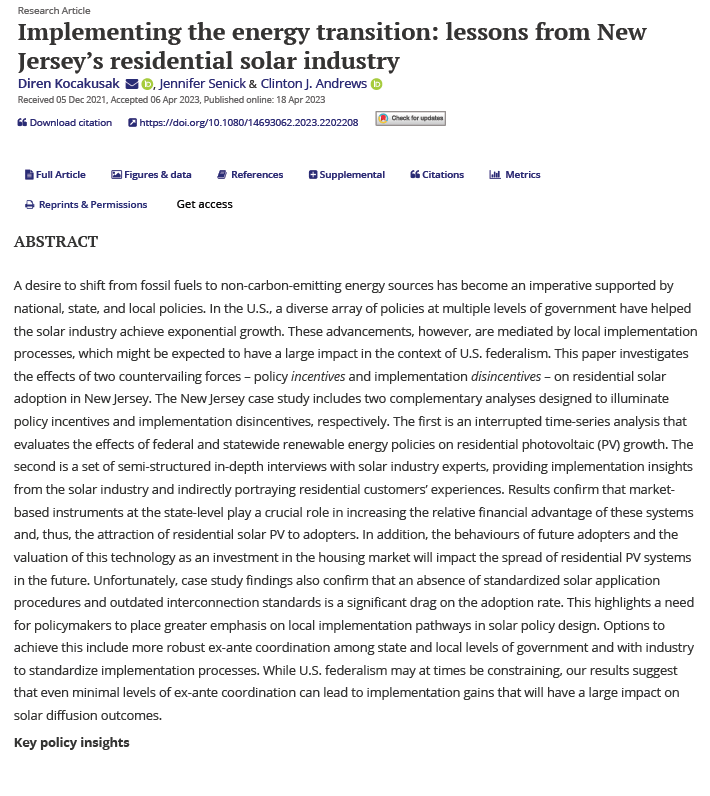Abstract
A desire to shift from fossil fuels to non-carbon-emitting energy sources has become an imperative supported by national, state, and local policies. In the U.S., a diverse array of policies at multiple levels of government have helped the solar industry achieve exponential growth. These advancements, however, are mediated by local implementation processes, which might be expected to have a large impact in the context of U.S. federalism. This paper investigates the effects of two countervailing forces – policy incentives and implementation disincentives – on residential solar adoption in New Jersey. The New Jersey case study includes two complementary analyses designed to illuminate policy incentives and implementation disincentives, respectively. The first is an interrupted time-series analysis that evaluates the effects of federal and statewide renewable energy policies on residential photovoltaic (PV) growth. The second is a set of semi-structured in-depth interviews with solar industry experts, providing implementation insights from the solar industry and indirectly portraying residential customers’ experiences. Results confirm that market-based instruments at the state-level play a crucial role in increasing the relative financial advantage of these systems and, thus, the attraction of residential solar PV to adopters. In addition, the behaviours of future adopters and the valuation of this technology as an investment in the housing market will impact the spread of residential PV systems in the future. Unfortunately, case study findings also confirm that an absence of standardized solar application procedures and outdated interconnection standards is a significant drag on the adoption rate. This highlights a need for policymakers to place greater emphasis on local implementation pathways in solar policy design. Options to achieve this include more robust ex-ante coordination among state and local levels of government and with industry to standardize implementation processes. While U.S. federalism may at times be constraining, our results suggest that even minimal levels of ex-ante coordination can lead to implementation gains that will have a large impact on solar diffusion outcomes.
Key policy insights
- Federal and state-level financial incentives significantly impact the residential photovoltaic solar adoption rate.
- The absence of streamlined interconnection application procedures and outdated interconnection standards for the grid limit the residential PV adoption in New Jersey.
- Our findings underline the importance of paying equal attention to both policy design and to technical standards to underpin implementation processes, especially in the decentralized context of U.S. federalism.
